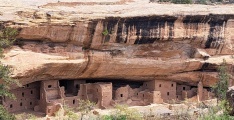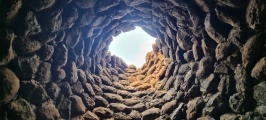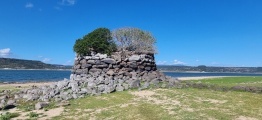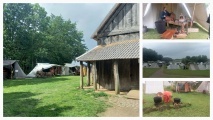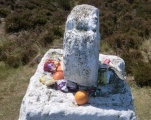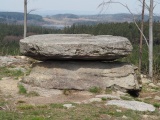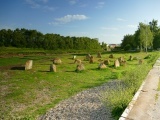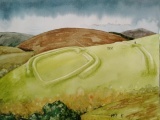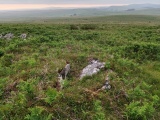Andy Burnham's Blog, page 16
July 16, 2025
Mesa Verde - Spruce Tree House
This cliff dwelling in Montezuma County, Colorado was built between 1211 and 1278 CE. It is the 3rd largest settlement in Mesa Verde National Park with over 120 rooms and 8 kiva chambers. See the nearby sites list and map from our page for lots more.
Published on July 16, 2025 08:55
July 15, 2025
Santa Barbara Nuraghe (Villanova Truschedu)
Lots more angles of this impressive nuraghe, including some from the air, on our page. One of the largest and best preserved nuraghi near Villanova Truschedu in Sardegna. It consists of the main tower, a lateral tower and a courtyard between them. The main tower has an almost intact tholos chamber and a well-preserved intra-mural staircase.
Published on July 15, 2025 06:42
Omodeo Nuraghe
Ancient sites with strange 'haircuts' #17. The remains of ancient stone Nuraghe or tower by the shore of Lake Omodeo, Sardegna.
Published on July 15, 2025 06:38
July 14, 2025
Vikingeborgen Trelleborg
One of the places where the Viking Age can be experienced close at hand is the Viking fortress of Trelleborg, near Slagelse in West Zealand. The impressive remains of one of the Vikings’ great ring fortresses were originally constructed around AD 980 by King Harald Bluetooth and are located in the beautiful area of Tude ådal. The museum at Trelleborg includes models, archaeological finds and reconstructions that give a vivid impression of Trelleborg’s history, its inhabitants and the function of the fortress.
Published on July 14, 2025 12:49
July 10, 2025
Fat Betty
July 2025: The ancient custom of leaving alms and offerings (skittles or biscoff anyone) at this boundary cross for those travellers less fortunate than oneself continues. Unfortunately when the wind picks up - it can get very windy up here - this detritus in its plastic covered wrapping gets strewn across the moor. The remains of a boundary cross on the North York moors. In his book "Folktales of the North York Moors" Peter Walker writes: "...fat betty is a carved piece of rock which is roughly square-shaped with a rounded head; she is painted white and is sometimes called White Cross,"
Published on July 10, 2025 05:38
July 9, 2025
Stone Table Kunějov
An unusual megalithic monument in Bohemia - two quite large and flat granite boulders lying on each other. While the bottom one looks to be a natural rock outcrop, upper circular stone is seemingly carved into a plane surface. The object truly looks like a stone table. It was considered as an ancient sacrificial place or sanctum even in 19th century. In that times the place was known as "Steinschale" (Stone bowl).
Published on July 09, 2025 13:29
Stone Circles, Flint Country Park (Modern)
Published on July 09, 2025 13:04
Sa Brecca
A sacred nuragic well of extraordinary importance located in the Ogliastra region, South-East Sardinia. Entrance to the well consists of a staircase of 11 steps that lead to an atrium with a seat along the side walls. Although it partially collapsed following a flood in 2014, it still preserves the tholos chamber that protects the spring water well and a chamber above it, also a tholos type.
Published on July 09, 2025 13:03
July 8, 2025
Bury Castle (Exmoor)
A reconstruction by Tony Quickenden of how Bury Castle may have looked 'sometime in the Iron Age'. Tony has also uploaded to our page some sketch examples of how he develops his ancient site reconstruction artwork . An Iron Age defended settlement with an additional cross-ridge defence on the uphill west side, situated on the tip of a spur in the hill above Selworthy. It survives as a good and well-preserved example of its class, with an associated cross-ridge work which is a feature of several broadly contemporary monuments in the region.
Published on July 08, 2025 13:43
Hentor A
One of seven cairns marked on the OS map and spread in a roughly east-west direction across the top of Hentor Warren. It includes a cist with an irregular coverstone, dating to the Bronze Age.
Published on July 08, 2025 10:58

